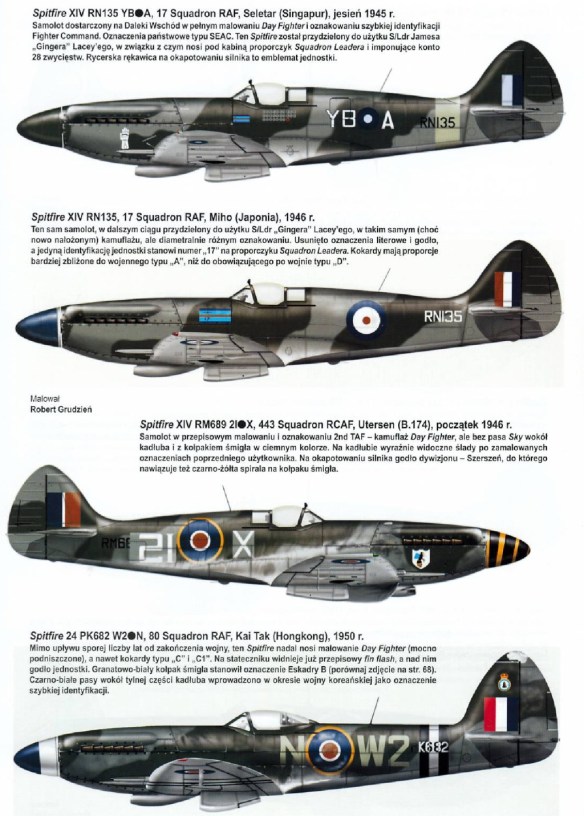
The final Spitfire variant, the Mk 24, was similar to the Mk 22 except that it had an increased fuel capacity over its predecessors, with two fuel tanks of 33 gal (150 l) each installed in the rear fuselage. There were also zero-point fittings for rocket projectiles under the wings. All had the larger “Spiteful” tail units: modifications were also made to the trim tab gearings in order to perfect the F 24’s handling characteristics. Late production aircraft were built with the lighter, short-barrelled, electrically fired Mark V Hispano cannon.
Performance was impressive – the F 24 achieved a maximum speed of 454 mph (731 km/h), and could reach an altitude of 30,000 ft (9,100 m) in eight minutes, putting it on a par with the most advanced piston-engined fighters of the era.
Although designed primarily as a fighter-interceptor aircraft, the Spitfire proved its versatility in several different roles. In fighter configuration the F 24’s armament consisted of 4 × short-barrelled 20 mm Hispano cannon – operational experience had proved that the hitting power of these larger weapons was necessary to overcome the thicker armoured plating encountered on enemy aircraft as the war progressed. The aircraft also served successfully in the fighter-bomber role, being capable of carrying 1 × 500 lb (230 kg) and 2 × 250 lb (110 kg) bombs, with rocket-projectile launch rails fitted as standard.
A total of 81 Mk 24s were completed, 27 of which were conversions from Mk 22s. The last Mk 24 to be built was delivered in February 1948. They were used by only one RAF squadron, 80 Squadron, until 1952. Some of the squadron’s aircraft went to the Hong Kong Auxiliary Air Force where they were operated until 1955.
Introduced into service in 1946, the F. Mk 24 differed greatly from the original Spitfire Mk I in many respects and undoubtedly brought the design to the peak of perfection, being twice as heavy, more than twice as powerful and exhibiting an increase in climb rate of 80% over the prototype aircraft, ‘K5054’. These remarkable increases in performance arose chiefly from the introduction of the Rolls-Royce Griffon engine in place of the famous Merlin of earlier variants. Rated at 2,050 hp (1,530 kW), the twelve-cylinder Vee liquid cooled Griffon 61 engine featured a two-stage supercharger, giving the Spitfire the exceptional performance at high altitude that had been sometimes lacking in early marks.
In growing numbers and with increasing capability the Spitfire served throughout World War II, not only with the RAF but with the nation’s allies, including US and Soviet squadrons. It also had the distinction of remaining in production throughout the entire war and was operational post-war, the last mission flown by a photo-reconnaissance Spitfire PR.MK 19 of No. 81 Squadron in Malaya on 1 April 1954.